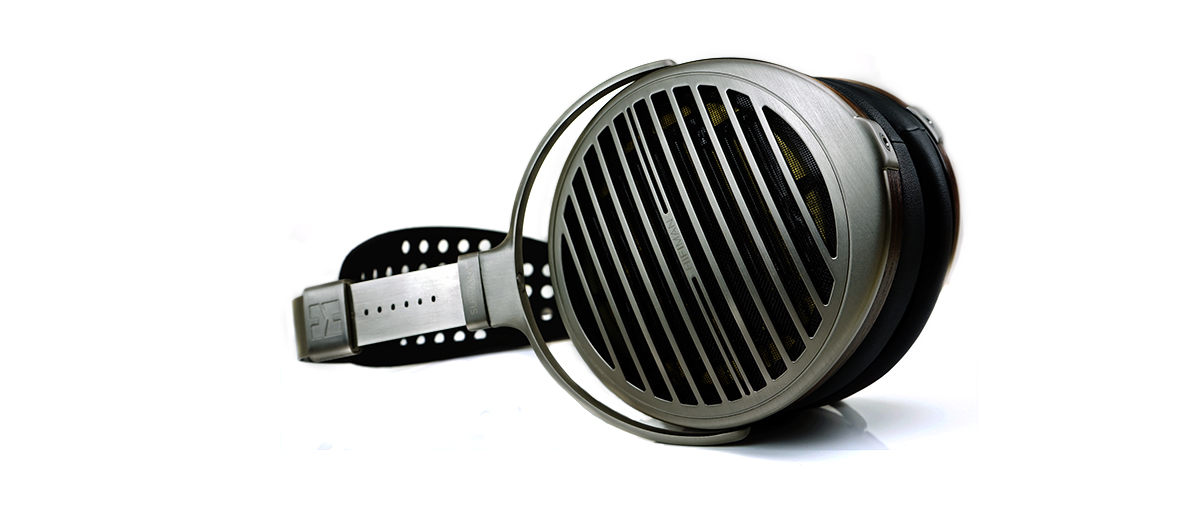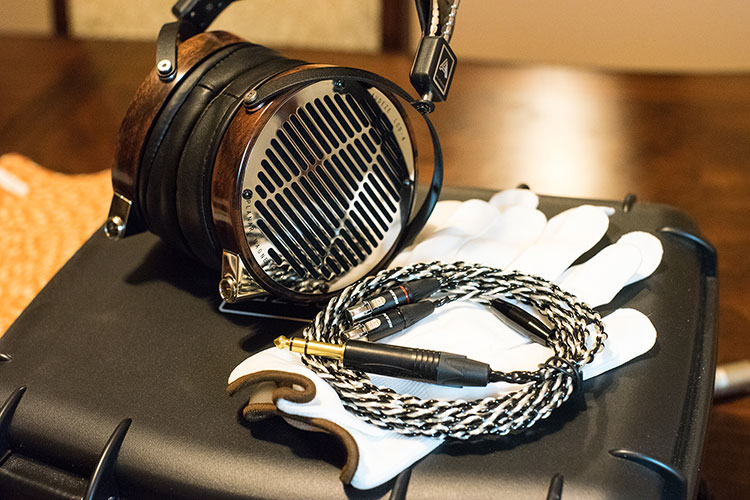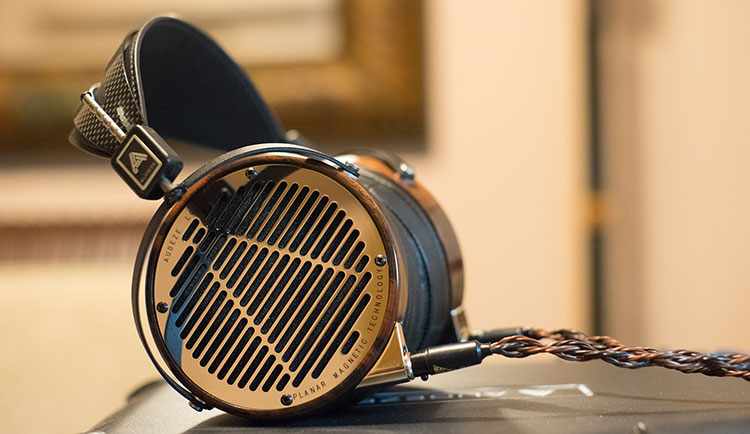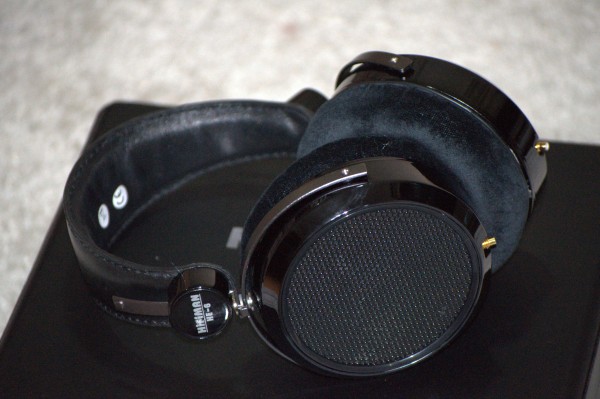Select Comparisons
Sadly, I do not have two additional headphones that I think would have rounded out this summit-fi comparison section, the Focal Utopia and the Stax 009. If we do get them I will add them to this section of the review.
Hifiman HE1000 V2
$2999
Form Factor
Until late last year, this was Hifiman’s flagship and a 2nd generation of the already well-received HE1000. The improvements over the V1 in many ways were very welcome. You got a tighter headband design, shallower cups, an upgraded cable build, and most importantly a substantial tweak in the tonal presentation.
The Susvara draws a lot from the HE1000 V2 but further refines everything on the outside. The weight differential is fairly non-descript, 420g versus 450g, however, the form factor of the Susvara for me is ideal.
The more rounded shorter height cups have less “loose” space and tend to hold their position better. The gimbal stems have tougher reinforcement and the pad finishing is smoother on the ear.
Technical
Internally there are some homages to the V2 but the diaphragm, magnet array, and window shade design are all quite different. The HE1000 V2 uses an asymmetrical magnet design which places the magnets offset to each other on each side.
The Susvara goes instead for the stealth magnet technology which allows symmetrical alignment but instead uses differently shaped magnets of a lower profile to further reduce distortion levels.
Efficiency
The other key difference is the use of the 24k gold trace material for the coils on the Susvara. The HE1000 V2 does not use gold materials so the offshoot is the HE1000 V2 is more efficient and does not need as much power as the Susvara to sound optimal.
The HE1000 V2 is rated at 35Ω and 93dB compared to the 50Ω 83dB so voltage and current demands are not quite as high. Still, synergy is very important with the HE1000 so I tend to end up using similar setups as the Susvara, just with the volume slightly lower.
Sound
The key step up from the HE1000 V2 is the tonal balance combined with better dynamics and tighter transient response. The HE1000 V2 will seem the livelier of the two but the Susvara is the smother and more defined headphone.
Bass
This is particularly so in the low-end where the HE1000 V2 will display more quantity but it’s a touch softer and not as well defined as the Susvara’s bass performance. The Susvara’s articulation and detail right down to the sub-bass delivery are sublime if a little more linear.
Mids
Other apparent tonal changes are the upper mids, vocals, and treble balance. The detail and texture of the Susvara are more accurate as are the instrumental placement and imaging.
I wouldn’t say though the Susvara is the more forgiving of the two because honestly, I find it to have less color than the HE1000 V2 and is more transparent sounding. Rather its harmonic balance is a little more even sounding producing a natural sound.
Vocals are more forward also and much more vivid sounding on the HE1000 V2. However, they do not sound quite as accurate, quite as detailed, and a little edgier in comparison to the Susvara. The Susvara vocals do have a slight lift but the attack is more refined for me and they are not quite as dominating.
Treble
The HE1000 V2’s treble is more balanced sounding than the older V1 with the superior body but they do come across as much more aggressive and forward sounding. The Susvara isn’t dead neutral, it does have energy but it’s more coherent and balanced sounding with less of an edge to it.
As such synergy with the HE1000 V2 tends to focus a bit more on controlling a level of splashiness and heightened sibilance that can creep in compared to the Susvara on percussive and high-pitched vocal passages.
Audeze LCD-4
$3995
Form Factor
The LCD-4 is Audeze’s flagship planar at a cool $4k. It is an open-back, circumaural form factor with excellent material standards but weighs in at 600g making it the heaviest planar headphone, almost 100g more than the older HE6 and 150g more than the Susvara. You will notice its presence on your head.
Weight
The weight is somewhat offset by the supremely comfortable and high-end lambskin pads that are thick and wedged. They provide a world-class seal in that regard.
The materials are all handcrafted with Macassar Ebony cups, lambskin pressure balancing headband straps, and a modern lightweight carbon fiber headband. It is a mix of the old and the new and they look beautiful.
The Susvara aims for a more lightweight proposition so whilst it can’t match the LCD-4 for a pure luxury finish it is lighter and more comfortable on your head. The headband design of the Susvara also has more gimbal flexibility for folding flat in multiple directions whereas the LCD-4 has only one cup swivel direction.
Technology
Technically both pitch a nanotechnology approach to their diaphragm design though using different build methodologies.
The LCD-4 uses a double magnet Fluxor array down to sub-05 micron thickness on the diaphragm film. Like the Susvara, the LCD-4 deploys a double-sided magnet array though with very different functional properties.
Hifiman has focused on stealth magnet technology to achieve as low a distortion mass as possible in the Susvara. Audeze’s Fluxor approach is all about magnetic strength to control the diaphragm improve transient response, and lower distortion in the LCD-4 performance.
Fazor elements are then used to help produce the level of accuracy in the waveform and reduce resonance.
Efficiency
The final difference is the use of gold in the Susvara for trace patterns compared with fine-grain aluminum for the LCD-4. Both have their pros and cons but the resulting outcome is that the LCD-4 is 200Ω but somewhat easier to drive 97dB sensitivity level.
The Susvara is much lower at 60Ω but way less efficient at just 83.5 dB. Both love a good amp but you will generally require more voltage and power for the Susvara to sound optimal compared to the LCD-4.
Some amps such as the ALO Audio Studio 6 work just fine with the LCD-4 but come up a tiny bit short with the Susvara. Other amps such as the Cayin IHA-6 balanced work just fine with both at a 7W output.
Sound
I need to ditch my preconceived mindset that the LCD range is all about muscular bass and meaty mids because the LCD-4 is perhaps their most reference sound to date yet, especially with its low-end response. It is not as dark or warm as they used to be, they are more linear in that respect but they are still fairly punchy.
Bass
To my surprise, the Susvara had a superior sub-bass response in both texture and detail. The low-end transient response of the Susvara is more “Stax-like” in how it delivers it so whilst it is maybe not as warmed up as the LCD-4 nor does have a comparable level of the body the sense of pure depth and spaciousness was much greater for me than the LCD-4.
Judging from the charts the LCD-4 does tail off ever so slightly from 50Hz down to 20Hz and prefers instead to work on a stronger mid-bass to midrange presence which is where that warmth and body comes from.
It also takes a little bit of power and depth away in the process which is perhaps why Audeze is keen to describe it as a “reference sound”.
This is not the case with the Susvara which keeps an even keel all the way down. I even think the Susvara might just have some gentle sub-bass boosting to get its point across but whatever way you cut you will hear a tighter, faster, and more defined sub-bass delivery on the Susvara and a much more linear bass-to-mids transition.
Mids
Mids are a little more prominent on the LCD-4, particularly lower midrange instruments. The instrumental timbre has a bit more body and heft to its tonality whereas the Susvara has a lighter but more detailed and pacier delivery.
The imaging on the LCD-4 is a definite step up on the older LCD series and puts paid to accusations that planar tech can’t image as well as some dynamic competitors.
However, the Susvara staging and imaging are on a whole new level for me. It’s a much grander sound but rather than diffuse and vague it is super accurate, complex, and very dynamic. You get a very spacious but involving sound.
The LCD-4, in contrast, has a bit more elevation at 1k and brings vocals a little further forward and in doing so brings in the staging presentation to a more intimate level and more center-focused.
If you go back to my original discussion on the mids performance of both, particularly on the leading edges of vocal notes I do think the Susvara has a nuanced edge here in both detail and refinement.
Treble
The top end of these flagships differs markedly. Audeze always seems to pull down their treble responses a little on their LCD range and the LCD-4 is no different. From 1-5k the LCD-4 drops and then some compared to the more balanced and energetic Susvara.
To compound this issue the upper treble is suddenly sounding overemphasized, both with the suck out on the lower treble and the general boost from 6-7k onwards to around 12k sounding greater as a result.
What that means is usually a slight predominance of upper-order harmonics as these will resonate a bit more than lower-order. With the bass now more linear than ever the top end of the LCD-4 brings in too much energy and as a result sounds a little disjointed and not as smooth as I hoped for.
In contrast, the Susvara keeps a steadier ship, albeit a slightly boosted one from the upper mids right the way throughout with only a minor hiccup around 8k. You get air, headroom, and sparkle but you also get more bite and definition in percussion and a timbre that, for me, is a little more pleasing to the ear.
Hifiman HE6
Discontinued, previously $1299
Form Factor
The older HE6, the original flagship from Hifiman, is no longer being made. You can still pick one up used for under $1000 on eBay but its old SRP was set at $1299 which is a far cry from $6000. If you were lucky you could have got one at $999 during the original launch window in late 2010.
Its build is old school and part of the original series of single headband heavier cup designs favored by Hifiman before the launch of the HE400i and HE560 band designs they now use today.
The HE6 is heavier than the Susvara, weighing in at 502g officially. The headband was always a touch loose for me so the HE6 cups tend to pull down leading to uneven pressure distribution compared to the much lighter and better-balanced placement of the Susvara.
Pads
The Ultra pad design of the Susvara is closer to the pads of the HE6. They are both circular though the HE6 pads always felt much cheaper and harder to change. The mix of pleather and polyester of the Susvara pads is also comfier and breath better than the velour and pleather-only pads of the HE6.
Efficiency
Both are equally inefficient to drive at 83.5dB for the HE6 and 83dB for the Susvara. That means both love balanced designs with quality amp signals and plenty of power to sound optimal.
Volume matching between the two is almost identical. The tonal differences are the only difference-makers in terms of exact volume comfort as the HE6 is a little more aggressive and brighter sounding than the Susvara.
Sound
I am still incredibly fond of the HE6 signature with its slightly more open sound than the LCD-2 and better top-end presence. Compared to the Susvara though you begin to see how much further forward Hifiman has taken the qualities of the HE6 combined with the technical capability of the HE1000 series.
Bass
I do emphasize the transient response and definition a lot in the Susvara and it is for good reason. The HE6 low end will give off a slightly heavier and more forward sound but it is not as well-defined and not as quick-paced.
The sense of space and depth in the Susvara is superior creating far better lower-pitched instrumental separation and generally a more natural-sounding timbre.
Mids
The Susvara attack is quicker, better defined yet more natural sounding than the HE6 which can come as a bit edgier and harder sounding in comparison. Vocal in particular sounds smoother and more detailed than the HE6.
Imaging was always a weak spot with early planar headphones and the HE6 always had a certain vagueness to its spatial cues and was more center-focused. Not so with the Susvara which paints a much more holographic soundstage and delivers excellent imaging.
The harmonic balance is just so much easier to digest on the Susvara than on the HE6. This is especially beneficial in terms of amp matching where often I would veer to tubes with the HE6 just to inject a bit more even harmonic balance which is not the case with the Susvara.
Treble
The treble on the Susvara has a smoother and more refined sound to it than the HE6. The HE6 top-end would always get a touch hard-edged and fussy, especially with poor amp synergy or lack of power.
The Susvara is more controlled in that respect and will generally sound a lot more balanced as a result. There is less encroaching on the upper mids so high-pitched vocal performances and percussion passages will not sound as splashy or forward.
Our Verdict
The Hifiman Susvara is an absolute joy to listen to almost anything with. It is one of the most immersive and technically capable planars that I have heard to date and fully justifies its summit-fi status in terms of sonic capability.
The speed, imagining, and control are more electrostatic than planar at times and there is never a moment where I start feeling weighed down by fatigue. They bring a delightfully involving dimension to almost every source track I throw at it.
Granted you need a great amp to get the most of the magic out of it but do not equate that to super expensive, even if the Susvara’s price and technical rating might indicate as such. The $1k Cayin iHA-6 sounded superb with the right amount of power and resolution to easily drive the Susvara.
Tonality Verdict
Tonally I do recommend a good DAC and getting that synergy right. Focus on that as the Susvara is highly transparent. Step forward to the Hugo 2 DAC stage which just runs every other DAC out of the room.
Maybe someday I will also dig deep and get a more power-happy tube amp but at moderate levels, the ALO Audio Studio 6 produces a very sweet and pleasing tone.
Would I like to see some more work on the materials used? Yes, possibly for $6000 I do have high expectations but would it affect the weight and balance? Considering the beautifully finished LCD-4 weighs a ton I would hesitate to say yes but rather “what if?”.
It is a difficult question to answer. Anyone into summit-fi will tell you it can be a case of diminishing returns business but at least contextually I can confidently say the Susvara outperforms many of its similarly priced summit-fi peers.
That may well be enough for some and more than enough for me to say it is highly unlikely I will be using anything but the Susvara for some incredibly enjoyable listening sessions.
HIFIMAN Susvara Technical Specifications
- Frequency Response: 6Hz-75kHz
- Impedance: 60Ω
- Sensitivity: 83dB
- Weight: 450g (15.9oz)







